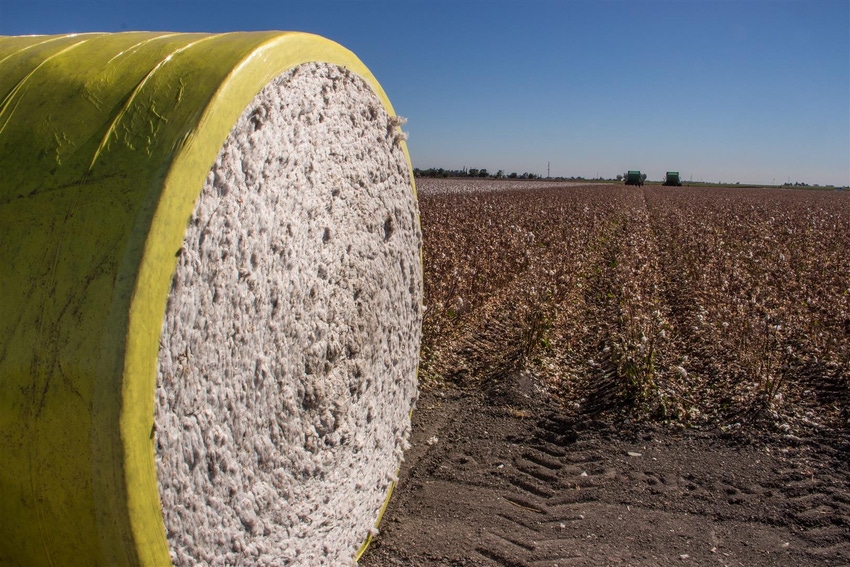June 26, 2017

California’s leading cotton-producing county saw a 28 percent bump in total acreage in 2016 with yields above the previous year’s figures, according to the the Kings County Department of Agriculture.
The county’s annual crop report issued by county Agricultural Commissioner Tim Niswander revealed a total agricultural value that was statistically unchanged from the previous year – down 0.9 percent – to just over $2 billion.
Milk still leads the county in total agricultural value at nearly $637 million.
While total milk production was statistically flat, softer milk prices continue to plague the industry. Total milk production in 2016 was more than 4.28 billion pounds. This is about 75 percent of total milk production in Washington state.
Cotton
In Kings County, a significant boost in cotton acreage pulled the value of cotton lint up by more than 30 percent to over $189 million.
Pima plantings remain supreme in the county, accounting for more than 90 percent of the county's cotton crop. Growers boosted 2016 Pima acreage by about 24 percent, compared to the previous year, according to the annual crop report.
Pima yields rose a solid 4.2 percent to 3.2 bales per acre on a countywide average as the price for Pima cotton remained relatively flat at $683 per bale to the grower.
Acala variety plantings were up 81 percent over the previous year as the price per bale fell 12 percent on average to $427. Yields were 6 percent higher to more than 3.4 bales per acre, with some reports of growers producing crops of four bales-plus.
Cotton seed production was up significantly as growers produced 29 percent more Pima seed and 92 percent more Acala seed than the previous year.
Nuts
Pistachios ranked fourth on the list of the county’s Top-10 commodities in 2016 with a value of more than $178.5 million, 108 percent higher than the previous year due to the crop failure California pistachio growers experienced in 2015 over a lack of winter chill hours.
Bearing pistachio acres increased 7.3 percent as yields soared 180 percent to about 3,800 pounds per acre, on average. Accordingly, the grower price for pistachios averaged $2.15 per pound, a 30 percent decrease from the previous year’s figure when growers produced less than 1,400 pounds per acre.
Almonds fell in behind pistachios in value in 2016 at about $123 million in gross value.
It’s important to note that the dollar figures reported in the annual crop reports are gross dollars and do not reflect net profit (or loss) to the grower.
Still, bearing acres of almonds were up 7.8 percent with yields likewise up 3.8 percent to over 2,100 pounds per acre.
Almond prices to the grower were down about 36 percent, on average, to $2.41 per pound. This compared to grower prices the previous year that averaged $3.79 per pound.
Almond hull prices continued their slide, falling another 41 percent to just over $73 per ton.
Walnut acreage remained basically flat as yields fell 4.7 percent to just over 2,000 pounds per acre. Prices rebounded just over 5 percent to about 93 cents per pound.
Vegetable and field crops
Processing tomatoes, which in years past have seen boom and bust conditions, saw reduced acreages as contracted plantings were down 4 percent.
This fell in line with overall field crop acreage declines, according to Steve Schweizer, deputy agricultural commissioner for Kings County.
Perhaps most surprising among conditions seen in the agricultural economy in 2016, Schweizer said, was the softening grower prices seen in many field crops, along with an overall decline in acreage.
While tomatoes accounted for much of the 10 percent overall reduction in vegetable crop values, those who did grow tomatoes saw yields rise 3 percent on prices that at just over $70 per ton, were about 8 percent lower than 2015 prices.
Alfalfa acreage was off 29 percent as prices to the grower fell 22 percent to an average of $142 per ton. Still, growers managed to yield almost three percent more hay than the previous year as they averaged nearly 7.7 tons per acre.
You May Also Like




